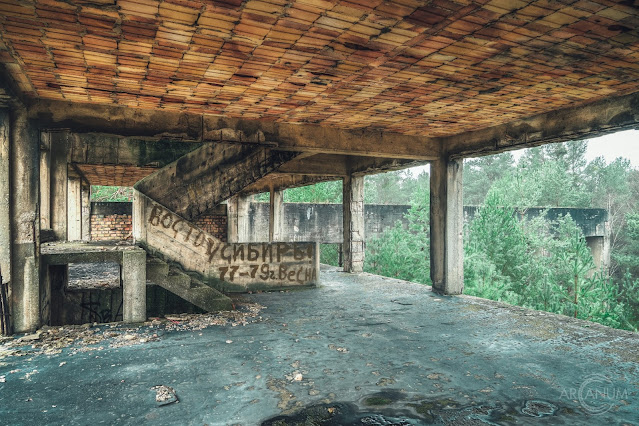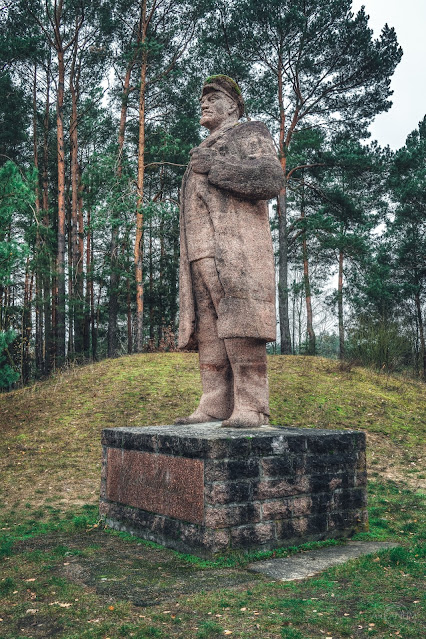On the third day of our November vacation in 2019, we slowly made our way south. On the way, we stopped at a former military facility whose history dates back to the 1870s, when the German Empire set up an artillery firing range there.
The Wehrmacht operated a development and testing center for new weapons systems and equipment on the site until 1945. From 1939, work was also carried out on the so-called “uranium project”.
We hadn't really looked into the size and layout of the site beforehand, so we approached the whole thing somewhat naively - but in the end it was reasonably successful and we were able to take away a few fascinating impressions.
The site is huge, divided by a country road and secured with fences all around. Signs assured us that the area is regularly patrolled by a security guard. So we looked for a parking space that was far enough away - even though our license plate clearly did not identify us as local residents, which is always suspicious in such areas.
From this parking lot, we set off on foot, first along normal forest paths and then along the fence until we found an opening that gave us access to the southern part of the site. Both my wife and I had an uncanny feeling the whole time - be it because of the foggy, gray weather or the long dark history of the place. We did not feel at ease. The path through the forest was rough, and we had to keep taking detours due to trenches and the ruins of buildings, but eventually we reached our destination - the test hall for the “Panzerkampfwagen VIII Maus”. It was an impressive sight, although it was by no means the largest building - the massive concrete skeleton with the vaulted roof is an imposing structure.
We didn't miss the opportunity to climb all the way to the top of the stairs. It wasn't a good feeling, because although the concrete is steel-reinforced, it is still quite crumbly after almost 80 years.
However, the view from the top made up for the discomfort on the way.
After the descent, we set about exploring other buildings in the vicinity.
After the war, the site was used by the Soviet army and we found some interesting relics - from murals in the sports hall to propaganda posters and Cyrillic graffiti. We even found a plaster bust of Lenin, which was no longer really recognizable as such.
When we looked out of the window on one of the upper floors, we saw that a security vehicle had driven up. For now, we stayed calm and continued to take our photos. But when the driver opened the gate and drove onto the grounds, we took to our heels and disappeared along the forest path that we had used as an entrance.
The humorous finale to our excursion came when we reached our car. Behind our car was a speed camera - safely hidden and unsuspicious by our foreign license plate. In the 5 minutes it took us to stow our things, he caught several cars - it was certainly a successful day for the officer. At least until we drove off, because we could see in the rear-view mirror that he left the scene shortly after us.























